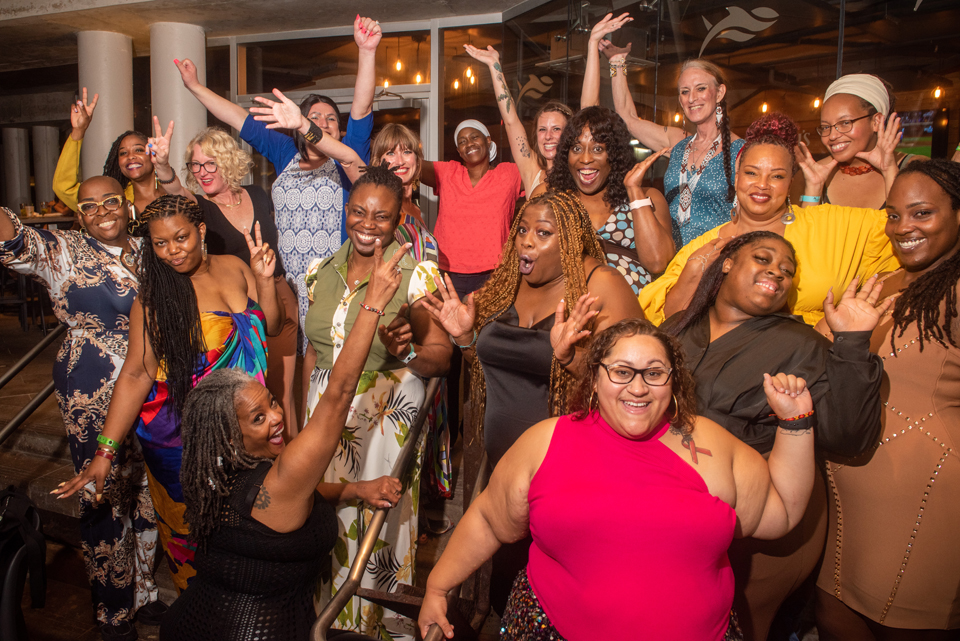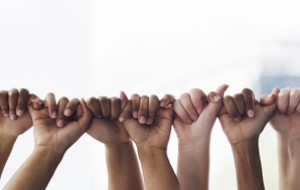What's on This Page?
Mission
The Well Project is a non-profit organization whose mission is to change the course of the HIV/AIDS pandemic through a unique and comprehensive focus on women and girls across the gender spectrum.
Vision
The Well Project envisions a world in which women living with or vulnerable to HIV have the information, support, and tools they need to advocate for their health and well-being, and live free from stigma.
Values
The work of The Well Project is grounded in these core values:
Women-led response
- Our unwavering focus on women across the gender spectrum is the essence of all that we do
- We model practices we want to see in our communities, our movements, and the world
Centering those most impacted by HIV
- We believe those most affected by change must guide change-making
- Our work centers Black women, Latinas, and other women of color living with HIV across the gender spectrum while creating spaces and opportunities for all
Community at the heart
- We foster connections among women living with and affected by HIV, rooted in compassion and care for one another
- We elevate self-care and advocacy as integral parts of caring for community
Evidence-based and always learning
- We ground our work in research and community-based evidence
- Our language and approach evolve as new insights emerge
Collective power
- We support and stand with women in claiming agency and building power
- We take action to ensure our communities are never an afterthought
What We Do
Founded in 2002, The Well Project has become a recognized leader in the fight against HIV by revolutionizing the availability and accessibility of much-needed resources designed specifically for women living with and vulnerable to HIV; and by prioritizing the advancement of women in all aspects of HIV prevention, treatment, and cure research and policy. The Well Project provides tools for women to build a foundation to not only survive, but also thrive with HIV. Reaching nearly four million users annually through our web portal and social media channels, The Well Project leverages technology to improve health outcomes and quality of life for women living with HIV.

The Well Project programming falls into the following five categories:
- Education and Information: The Well Project supports agency and health literacy among women living with HIV by developing and providing access to culturally responsive, scientifically accurate, women-focused HIV information. Our content addresses a wide range of issues related to HIV and women's health.
- Community Support: The heart of any community is its people and their ability to connect. One of our primary goals is to sustain a secure, supportive, trusted space we all share. To that end, The Well Project fosters a strong and engaged global network of women living with HIV across the gender spectrum.
- Advocacy and Leadership: The Well Project offers programming that enhances advocacy and leadership among women living with HIV, including webinars and discussion series; a strong presence at scientific, advocacy, and policy conferences; and opportunities to ensure women living with HIV are meaningful participants at decision-making tables.
- Collaborative Engagement: The Well Project develops mission-aligned partnerships with key organizations in HIV and intersecting fields. These relationships elevate our respective work, inspire collaboration, and ensure that all our endeavors add value by uniquely addressing gaps in current programming and resources.
- Women-Focused Research: The Well Project identifies opportunities to advance the HIV research and policy agenda on women, ensure the implementation of evidence-based strategies, and increase research involvement and advocacy among women living with HIV.
Why Women?
Women and girls represent more than half of all people living with HIV across the globe -- that's more than 18 million women and girls living with HIV. Among transgender women, the HIV epidemic is particularly severe. It is estimated that the global proportion of transgender women living with HIV is 66 times higher than in the general adult population.
In the US, women account for approximately one in four people living with HIV and one in five new HIV acquisitions. Black and Latina women, though they represent less than 30 percent of the general population, bear an extraordinary proportion of the burden of HIV – about eight out of 10 women living with HIV in the US are women of color.
Women living with HIV also face numerous structural and societal barriers to accessing healthcare. For many women, an HIV diagnosis is only one challenge on a long list: gender-based violence and trauma, stigma and discrimination, racism, lack of female-controlled prevention methods, limited participation in clinical trials, and other gender-based inequalities (including poverty, housing, serving as primary caregivers, laws that disproportionately affect women). These inequalities not only increase women's vulnerability to HIV, but also negatively impact the health of women living with HIV. Women tend to be diagnosed with HIV later in their disease than men and fewer women than men are getting HIV treatment. Despite these shocking facts and statistics, women living with and vulnerable to HIV have been underserved and underprioritized in HIV programming, policy, and research throughout the epidemic's four decades.
We invite you to join us as we work to improve the landscape for women living with and vulnerable to HIV. Together, we can change the course of the HIV epidemic...one woman at a time.








